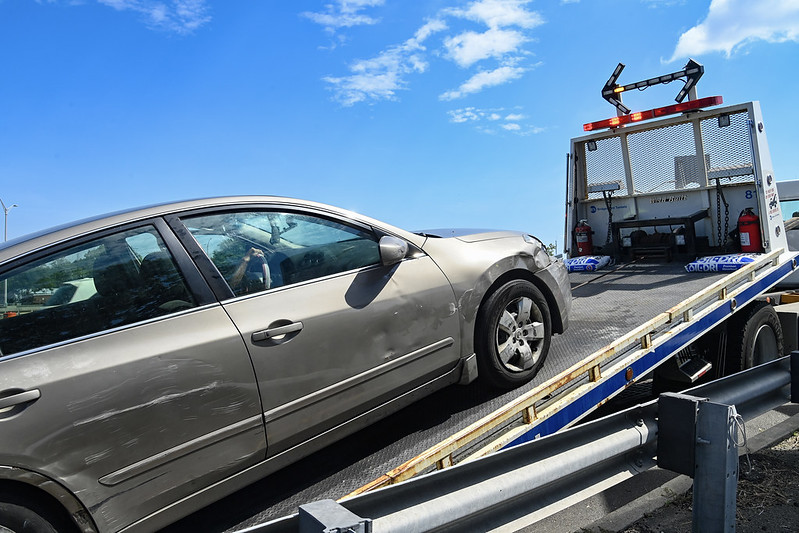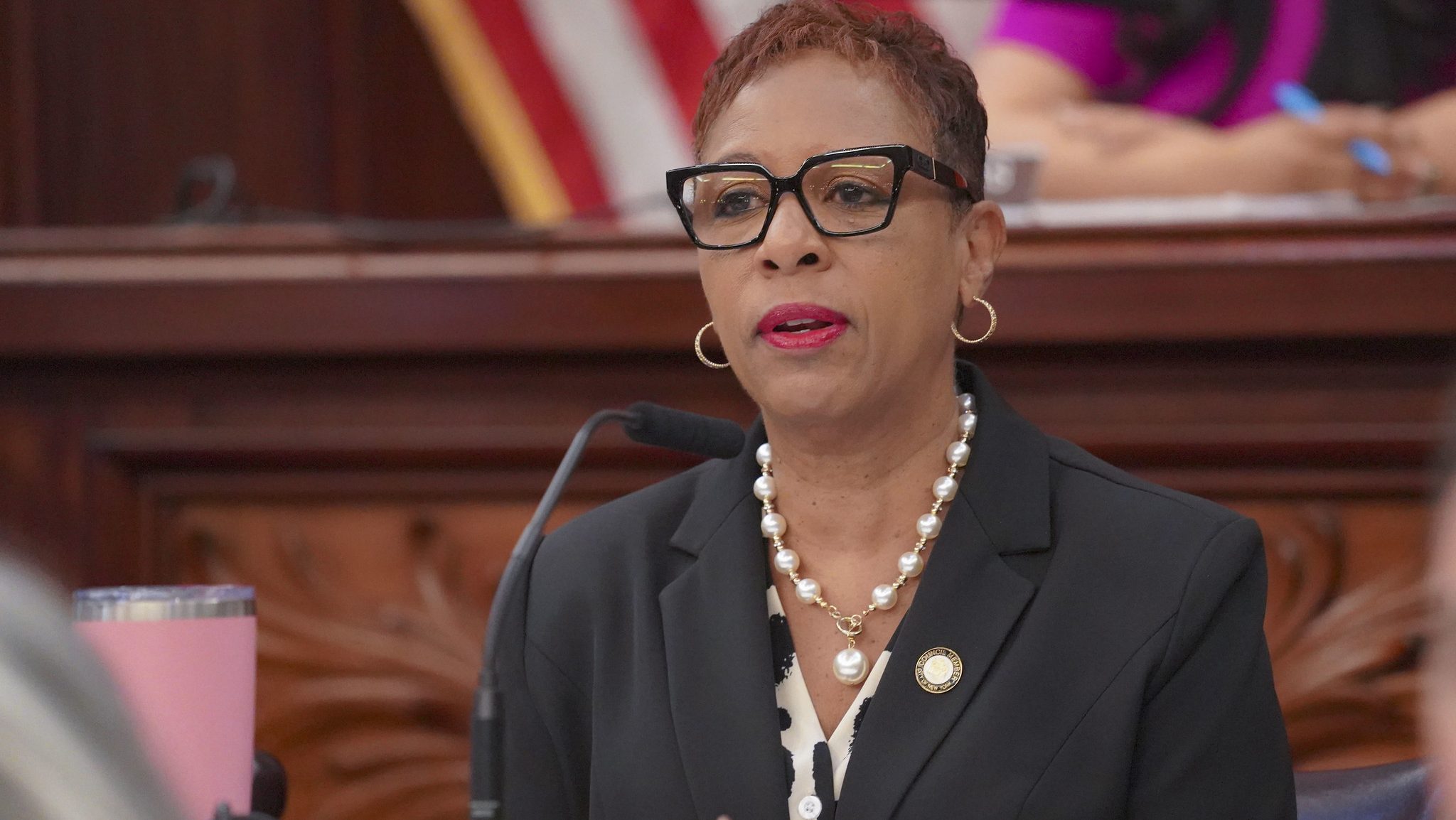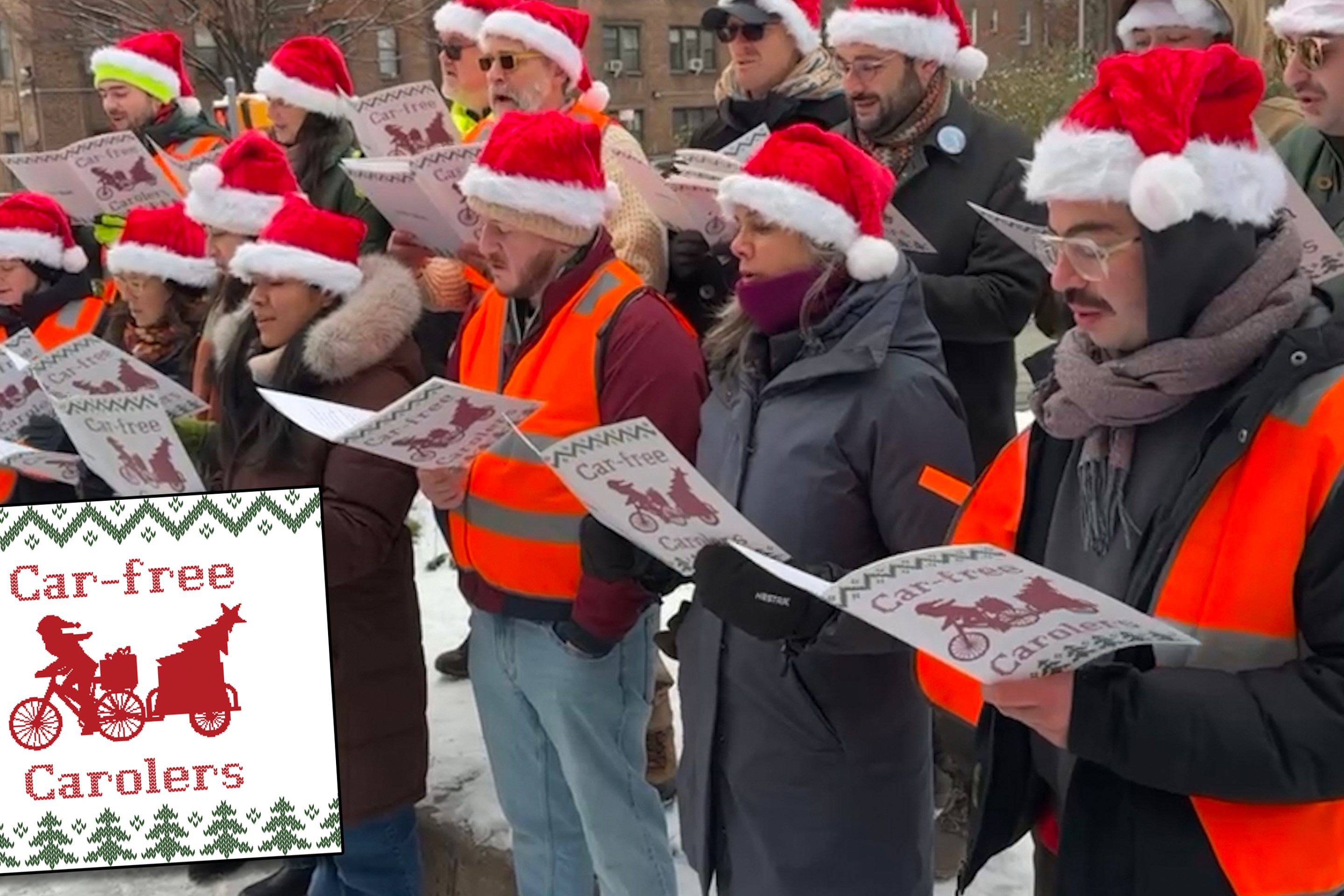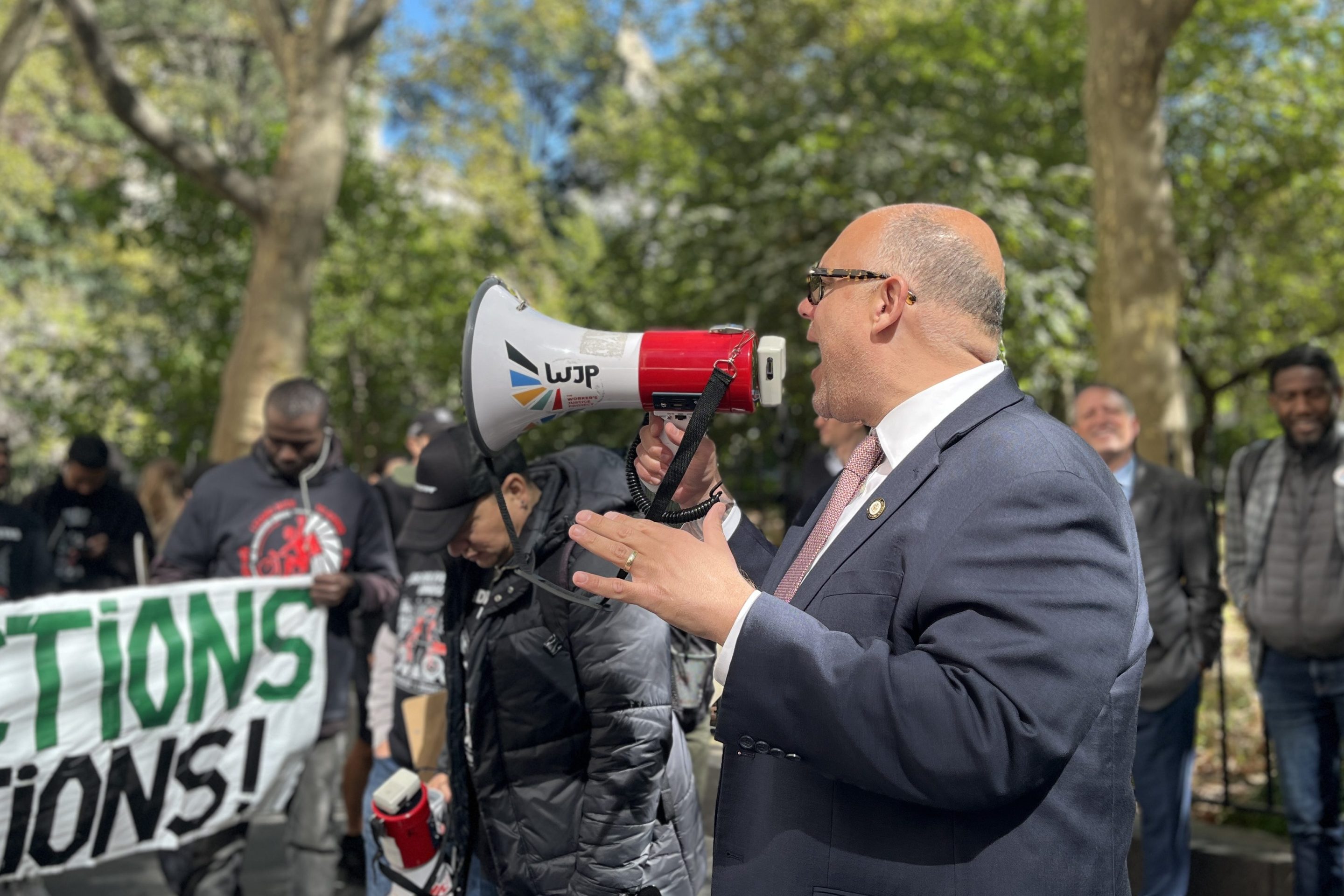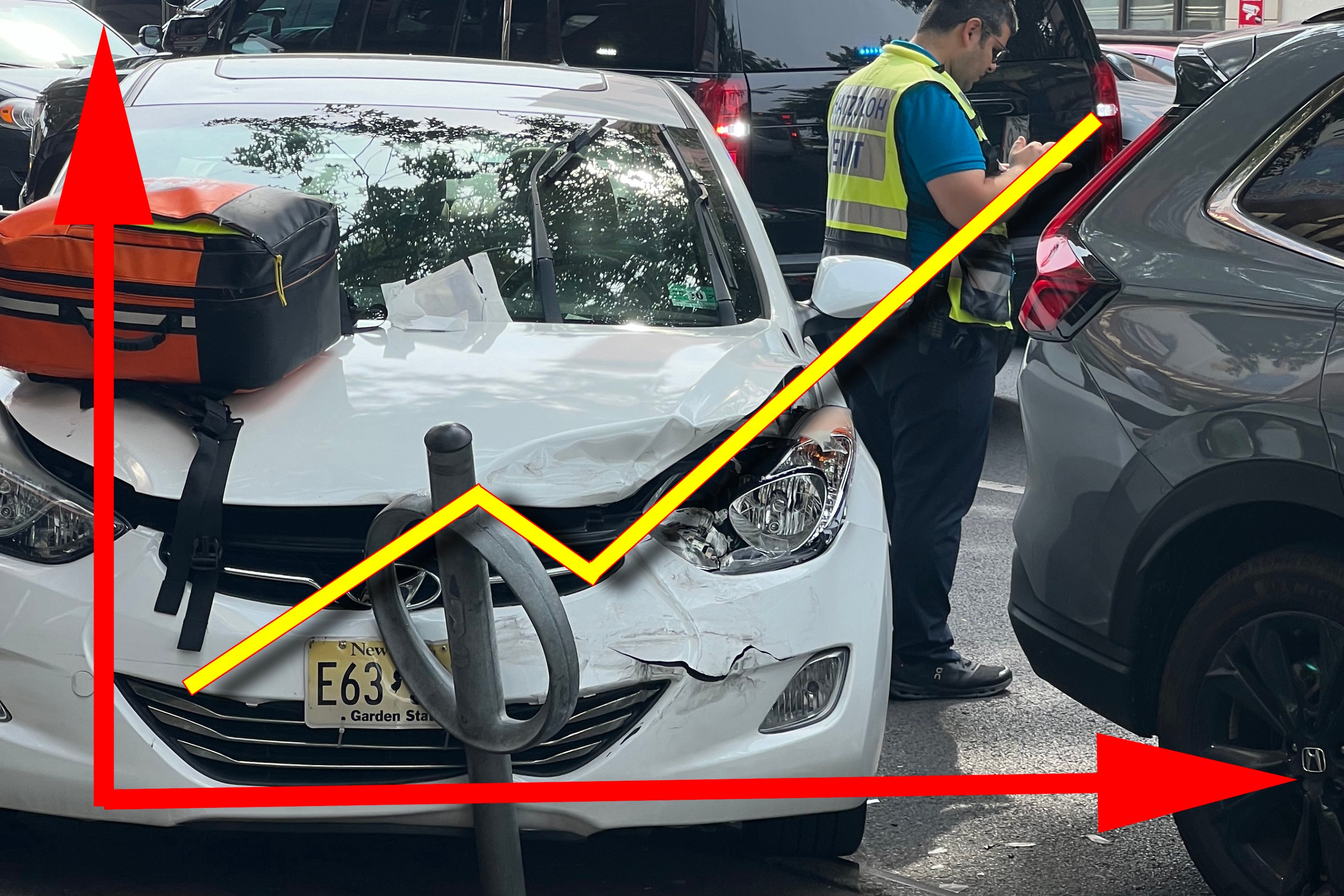When MTA CEO Janno Leiber said back in April that the agency loses “something like in the $50 million range” every year thanks to people intentionally obscuring their license plates, he was just scratching the surface of the agency’s toll evasion problems.
According to a Streetsblog analysis, the MTA lost a whopping $144 million to toll scofflaws last year, nearly triple the figure that Lieber cited.
To blame for the disparities are the MTA’s own murky accounting practices, which good government advocates say obscure the big picture.
As the MTA undercounts the cost of toll evasion, it also boosts its toll collection rate by counting fines and late fees — which are usually much higher than the tolls themselves — as revenue generated from tolls.
“It would be better for public transparency to have the rates of toll collection separate from the fines because it is a separate revenue source and it's a separate way of evaluating performance of the agency, and that's how you hold it accountable,” said Rachael Fauss, a senior research analyst at the good government group Reinvent Albany.
And with congestion pricing inching closer to reality, Fauss told Streetsblog that it’s imperative that the MTA get a clearer picture of how bad toll evasion actually is, and how to stop it.
“Whatever lessons can be learned from evading tolls on bridges and tunnels should be applied before congestion pricing starts up so we don't lose revenue,” Fauss said. “It’s important for public confidence and fairness in the system.”
The MTA and Port Authority held a press conference to announce they are teaming up with regional law enforcement officials to crack down on toll evasion. This fraud will not be tolerated at the expense of law abiding citizens. pic.twitter.com/20woKiIKNP
— NYPD Transportation Bureau (@NYPDTransport) May 22, 2022
To arrive at our conclusions, we used the MTA’s toll collection figures from 2021.
The MTA takes a picture of every single vehicle that crosses its nine bridges and tunnels — some 308 million crossings last year alone. Vehicles with license plates that cannot be identified by the MTA’s cameras or a staffer go into a category that the MTA calls “unbillable.” They accounted for just 2 percent, or 6.1 million of all crossings last year. Some unbillable crossings are fraudulent, like when drivers purposely deface or obscure their license plates, and others are benign — the DMV may not have an accurate address on file, among other scenarios. Both categories added up to cost the agency nearly $60 million in 2021.
This is the figure that Lieber was apparently referencing, and the case of the MTA bus supervisor who evaded tolls by obscuring his license plate and owed $30,000 to the MTA is a good example of this occurrence.
All the other crossings — the vast majority — are tallied up as “billable,” because the MTA can identify a plate, and in theory, an entity from whom to eventually extract payment.
Tolling drivers with an E-ZPass is seamless — the money for the toll is immediately taken out of an account, and drivers who use the system receive a deep discount. A car with an E-ZPass that goes over the Verrazzano-Narrows Bridge, for example, owes $6.55; without one, the toll is $10.17.
Drivers without E-ZPass are tolled by mail. The MTA takes a picture of their license plates and sends a bill to the registered address. Then it waits for payment. If the driver doesn’t pay, late fees are tacked on, and those fees are much higher ($50 and $100) than the toll itself. That scofflaw bus supervisor's bill to the MTA? Only $3,000 were tolls, the other $27,000 were late fees.
Those unpaid tolls and late fees — money that the MTA has not recovered but in theory could recover — are counted as billable. In 2021, this unrecovered amount, which we’ll call “IOUs” was roughly $84 million, a number calculated by Streetsblog and not disputed by the MTA. (It’s worth noting that subway and bus fare evaders are not given the same courtesy by the MTA: skip the fare at the gate and pay later on the honor system.)
Add the unrecovered billable IOU money to the money lost to unbillable drivers, and the total cost of toll evasion last year was at least $144 million.
What makes the true cost of toll evasion extremely hard to calculate, is that when the MTA collects late fees, it puts them toward the total amount of money the agency was supposed to collect for the tolls themselves. Then the MTA uses this figure to calculate its “revenue collection rate.” In 2021, it was nearly 96 percent.
The MTA has noted the growth of toll evasion — the agency has launched a few notable crackdowns this year, and convened a “blue ribbon panel” to come up with “innovative approaches” to combat the issue. According to the agency, including fees in the pot of collected tolls is just the way the process works.
“The data presentation shows that fees collected from motorists who fail to pay their tolls — and are frequently pulled over by MTA officers and separated from their vehicles — represent an integral part of the cashless tolling process,” agency spokesperson Aaron Donovan said in a statement.
Yet fines and late fees can sometimes push a collection rate into the realm of mathematical impossibility. In 2017 and 2018, the Queens Midtown Tunnel had a 100.7 percent collection rate, according to the MTA’s board books from 2019.
Sociologist Noah McClain, who studies the MTA and technology and first noticed the bizarre percentages in the board books, said that the MTA’s accounting choices make it difficult for the public to understand how the agency works.
"The fact that smart, informed people trying very hard to make sense of the MTA’s numbers cannot figure out exactly how the MTA makes and loses money, and what that may or may not say about a class of people who use bridges and tunnels with impunity from tolls, is exactly the point," McClain, a faculty member at Santa Clara University, told Streetsblog. "There is no reason why it should be this ambiguous."
